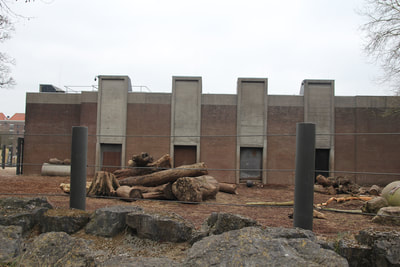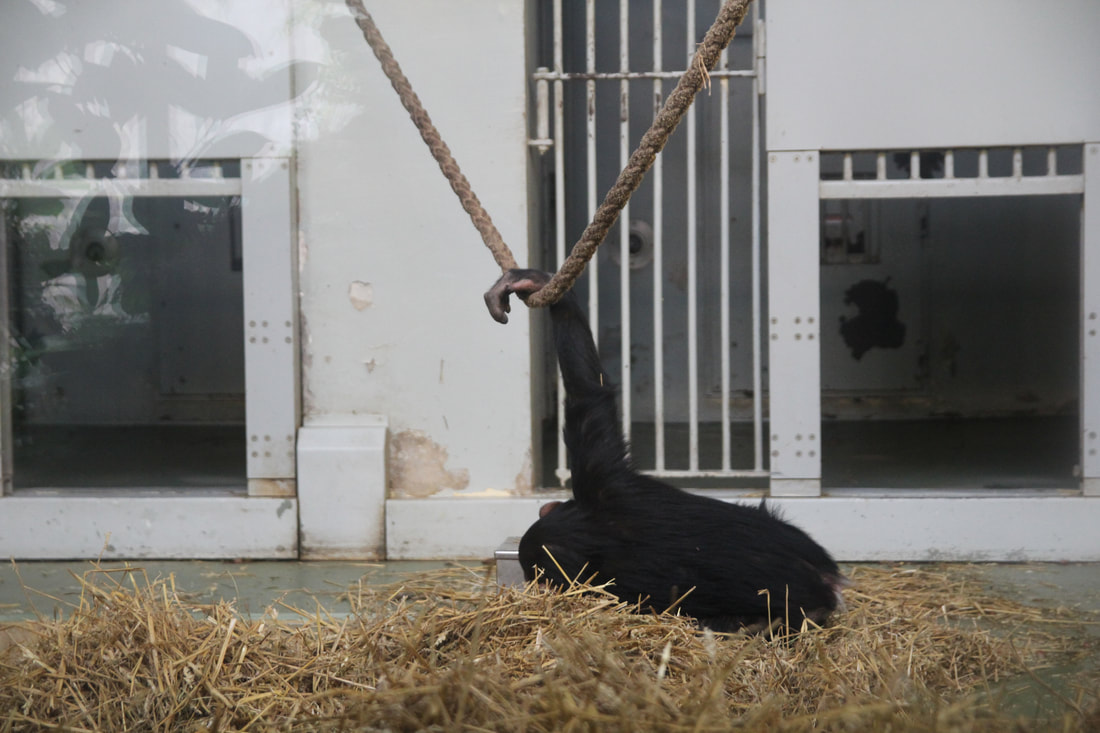Thick descriptions
A Visit to Artis: Some Notes
By Tess Post.
A manifestation of bourgeois desire
Upon entrance of Natura Artis Magistra (Latin for ‘nature is the preceptor of art’) I am immersed in different, seemingly eclectic, architectural constellations, ranging from neoclassic to romanticist designs. A blurry mess of frantic toddlers, panicking parents and smoking tourists is set off against a majestic entrance – complete with golden eagles stacked upon thick pillars. Artis appears as a manifestation of its past bourgeois aspirations and its present public educatory function.
Artis was established as the first Dutch zoological garden by the upcoming Amsterdam bourgeoisie in 1838, first open only to members, but since 1851 to the general public. It combined different traditions, most notably those of collecting natural (but dead) objects/naturalia, and the keeping of living animals (known in the forms of menageries) for the entertainment of humans.[1] Artis was inevitably a product of colonial wealth and desire; its captive animals were often ‘acquired’ in the colonies, and remnants of exotic non-human animals and human animals were brought back to be displayed in Artis’ ethnographic museum. This collection and display of non-human animals was based upon categorization and aesthetic preference.
The practice of and obsession with collecting was thus integral to the success of Artis. Fragments of this narrative remain; throughout Artis’ material and online spaces, words such as ‘animal collections’ are used extensively, and the acquisition of new animals to the existing collection is always widely praised and used to attract more visitors. On Artis’ website, one can browse through the ‘collection of animals’. Such narrative help to consolidate and reinforce the idea that individual animals are somehow symbolically representative for their entire species. Moreover, through this desire to collect, the animals are highly aestheticized. The animals were, and still are, assessed according to their beauty, as is demonstrated by the following quote from Artis’ annual report of 2015: “The big kudus are possibly the most beautiful antelope of Africa” (33). And the visitors agree; at one point I saw a woman eagerly trying to take a photo of these kudus.
Through this symbolic representation, which bears undue resemblances to biblical ideals such as Noah’s Ark, the animals are installed as unattainable objects, fully other, at once desired and oppressed. In Artis, even the plants and flowers are encaged. ‘Nature’ as a whole is erected as unreachable. Artis, in this sense, plays with and capitalizes on elements of ‘the natural world’. Visitors go to the zoo to find a bit of ‘nature’ amidst all the ‘culture’ of Amsterdam. Its configuration stages encounters between ‘nature’ and ‘culture’, only to reinforce this binary and to make money from it. At the end of the day, the paying visitor is supposed to visit the shop and buy little souvenirs as remembrances of these encounters.
[1] Mehos, Donna C. Science and Culture for Members Only: The Amsterdam Zoo Artis in the Nineteenth Century. Amsterdam: Amsterdam University Press, 2006.

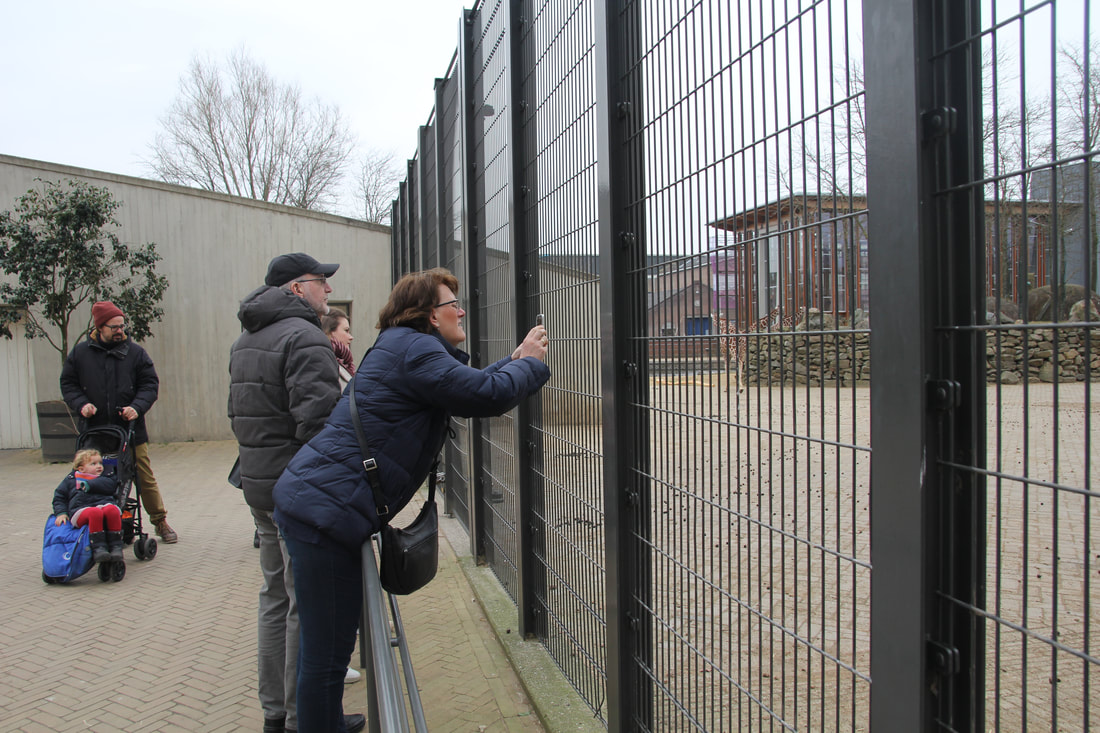
Performing wildness
Integral to the aforementioned binary are also the conceptions of ‘wild/savage’ versus ‘captive/domesticated’. When visiting the zoo, I was struck by the accompanying plaques with the animal enclosures. Interestingly, they all explicated the behaviour and social structures of the animals when they were in the wild. For example, an entire section is devoted to the Jaguar’s vigorous hunting behaviour, as it is apparently the only big cat that is able to bite through the skulls or shells of its prey. This description stands in stark contrast with its actual behaviour, as it is zoochotically pacing around the same repetitive trail in its tiny enclosure. This behaviour was also observed by a woman standing next to me, who was literally anticipating its next movements and appeared happily satisfied once her predictions were fulfilled.
Another plaque reads how elephants have ‘handy trunks’ which they use for all sorts of things, and how they will hide in the shade during the warmest hours of the day. This description is especially ironic, since minutes later we witnessed an elephant frantically pulling on a thick gate with her ‘handy trunk’, in an effort to get to the warm, inside enclosure. To my horror, some women standing next to me observed the scene too and though it was ‘cute’. As John Berger notes, “the life of the wild animal becomes the ideal”, and this ideal is actively perpetuated in Artis’ set-up.[1]
As much as Artis is an artificial prison for animals, by focusing on the ‘wild’ aspects of the animals, one might easily forget this. Throughout the park, the visitor is reassured that the animals are able to display their ‘natural’, ‘wild’ behaviour in their enclosures. For example, on the plaque of the lions it reads that “on the present Kerbert terrace the lions are able to display all their natural behaviours”. This is simply incorrect; in the ‘real wild’, lions usually live in social groups of around 15 individuals – in Artis it is just a father (Caesar) and his two daughters. When we asked the caretaker about this situation, he said they neutered the father because otherwise he would impregnate his own daughters.
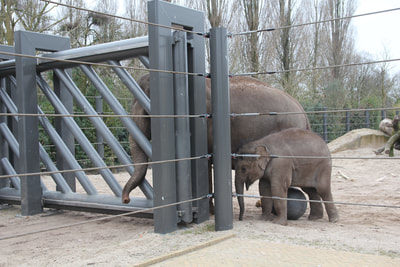
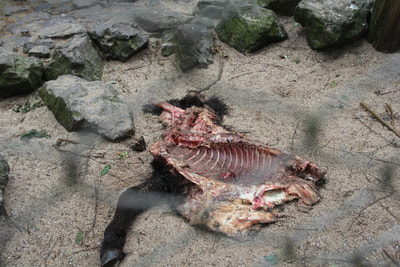
The Kerbert terrace on which they live was erected in 1927, and barely changed since. On the photos below, you can see the uncanny resemblance of the terrace in the 1940’s and just a few weeks ago. The terrace was installed as one of the first Hagenbeck’s Frei-Anlagen inspired enclosures, and it is listed as a national monument. And apparently, as stated on Artis’ website, the idea was not only that the lions could be seen in a more ‘free’ and peaceful ensemble, but also that the animals themselves could enjoy a more ‘open’ view of the humans. During my visit, I was intrigued by the subtle yet effective framing of the collection of animals; the lions are not said to be kept in a cage or enclosure, but in a verblijf or a residence.
When I visited Artis, I was struck by the spectacle that is the feeding of the predatory and carnivorous animals. The first I witnessed was the feeding of the lions, and an entire audience was waiting in anticipation. What a disappointment, when one lioness was not even interested in the fresh pieces of meat, and instead went back to lie on a tiny terrace in the corner. Still, this spectacle of performing wildness was intriguing to many, and everyone was capturing the scene with their phones or cameras. And the lions have to perform. They were not allowed to go back into their inside, hidden and heated enclosures. They are not allowed to escape the human gaze. When we asked the caretaker why, he simply proclaimed that we would complain and want our money back if we did not see the lions. This rhetoric is everywhere in Artis, and fundamental to our current relationship to animals – they are here for our pleasure.
[1] Berger, John. Why Look at Animals? London: Penguin, 2009: 17.
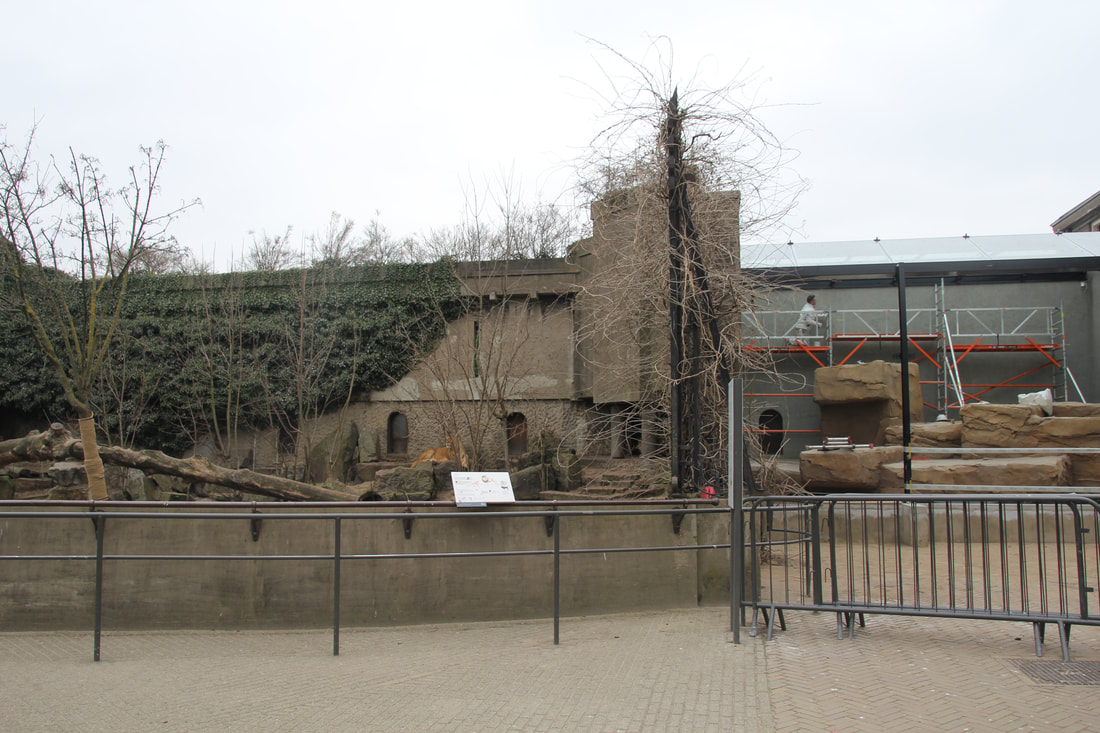
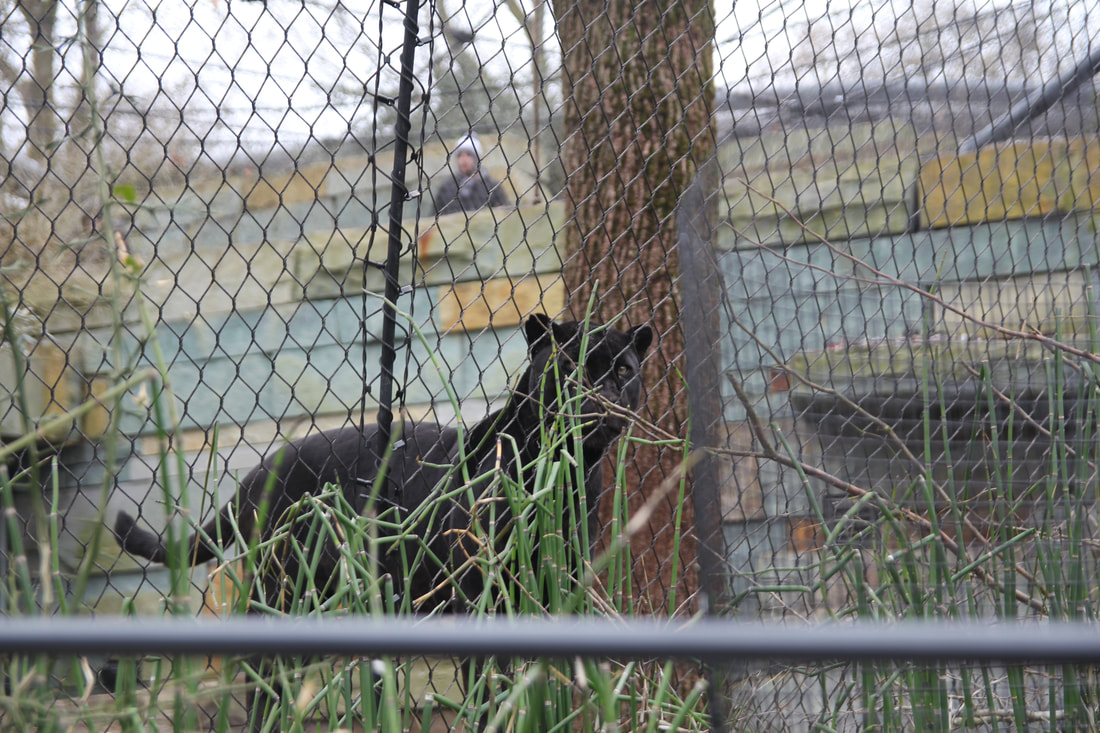
Artis’ image
Artis upholds a public image of constant zoo renewal and as being profoundly invested in improving animal welfare. I was reminded of this while walking through the zoological garden and reading all the plaques (“we are building a new, bigger enclosure”, “we just built this enclosure and the animals love it”). At home, I delved deeper into press releases and interviews with the Artis’ employees and found that this narrative is (logically) extended to its public media image. For example, the current director of Artis, Rembrandt Sutorius, professes to be all in favour of zoo renewal. In an interview, he explains how he wants to enlarge certain enclosures, and possibly “get rid” of some animals if big enough enclosures cannot be provided. Moreover, Sutorius aims at bringing back the educational importance of the zoo. However, behind this public façade, he appears especially concerned with making Artis more attractive to human visitors and investors. He recently rebuilt an entire area integrated with the sea lion enclosure, that one can rent for exclusive parties and dinners. The area, named the Robbenzaal, is now marketed on the website as “dine or party while looking at the California sea lions” and as even having the possibility of doing a light show. How is this ‘better’ for the animals, and how is being able to have a fancy dinner with the sea lions educational?

Photo found on the ARTIS website.
On the plaque with the sea lions, it reads that they can dive up to 100 meters in depth. In Artis, they are not able to dive at all. Instead of making the enclosure for the sea lions bigger, Artis decided to invest in making the enclosure for the human animals bigger. Moreover, it is mentioned multiple times how the sea lions have “excellent hearing”, which makes it all the more excruciating to know that they will now often be surrounded with loud, partying, nocturnal visitors. Arguably, such current practices bear a lot of resemblances with the 19th century bourgeois parties and gatherings often held at Artis.
Throughout Artis, I was constantly reminded of their effort for conservation and preservation programs. On almost all of the plaques accompanying the different animal enclosures, there was some mention about a program that Artis supports. Again, the active display of this support enforces the notion of Artis, and the zoo more general, as harbors of animal wellbeing and as actors against the ongoing species extinction. In line with Matthew Chrulew’s words, the modern zoological gardens have reinvented themselves as “salvific arks”.[1] The maintaining of these threatened wildlife populations requires active intervention in all aspects of the animals’ lives. For example, a zookeeper explained how they usually take away a vulture’s egg, to make sure it is kept warm at all times in a breeding machine. When the egg hatches, the chick is put back in the nest. Zoos, in this respect, are manifestations of biopolitical power.
It appears as though, through this blurring of the traditional power structures, the structures itself might slowly eradicate. Enclosures become bigger, bars and tiny cages are slowly hidden, and the zoo proclaims itself as deeply invested in conservation and preservation programs. However, as Brian Massumi argues, the blurring of these structures are not necessarily a sign of its demise – rather, this blurring might be integral to the continuation of that very structure.[2] In case of Artis, the obscuring of the traditional power structures inherent in the zoological garden are not pointing to an eradication of these power structures, but rather have been employed as a mere capitalist move because the Artis directory knows people want to consume a superficial idea of animal wellbeing.[3]
The practice of the zoo
Artis is a desolate place. Screaming toddlers, British tourists smoking marihuana, middle‑age women enjoying the sight of sad elephants. Bird shit everywhere. Flowers in cages. Shrieking parrots. Bacon sandwiches and hot dogs at the Artis cafeteria because who gives a crap about domestic animals. Anyone is looking for anything out of the ordinary to happen. A weird encounter with an even weirder animal. A growl from a panther. An elephant pulling at a gate. A lion viciously attacking a hanging piece of meat. But even such instances will never be fully satisfactory, only deeply unsettling, for they all point to the fact that these animals should not be locked in here.
Ultimately, Artis is an institution created for the aesthetic pleasure, and arguably education, of human animals. They invest the most money in those animals attracting the most visitors. They capitalize on the festishization of young/baby animals by promptly hanging up posters displaying the new critters. The enclosures are active reproductions of the forced captivity of certain individuals. The non-human animals remain as monuments of their own demise, and the human animals enjoy it.
[1] Chrulew, Matthew. “Managing Love and Death at the Zoo: The Biopolitics of Endangered Species Preservation.” Australian Humanities Review vol. 50, 2011: 138.
[2] Massumi, Brian. What Animals Teach Us about Politics. Durham: Duke University Press, 2014.
[3] In their most recent annual reports (2014, 2015, 2016), it is repeatedly mentioned how Artis is aware of the growing concerns among their visitors about the animals’ wellbeing.

